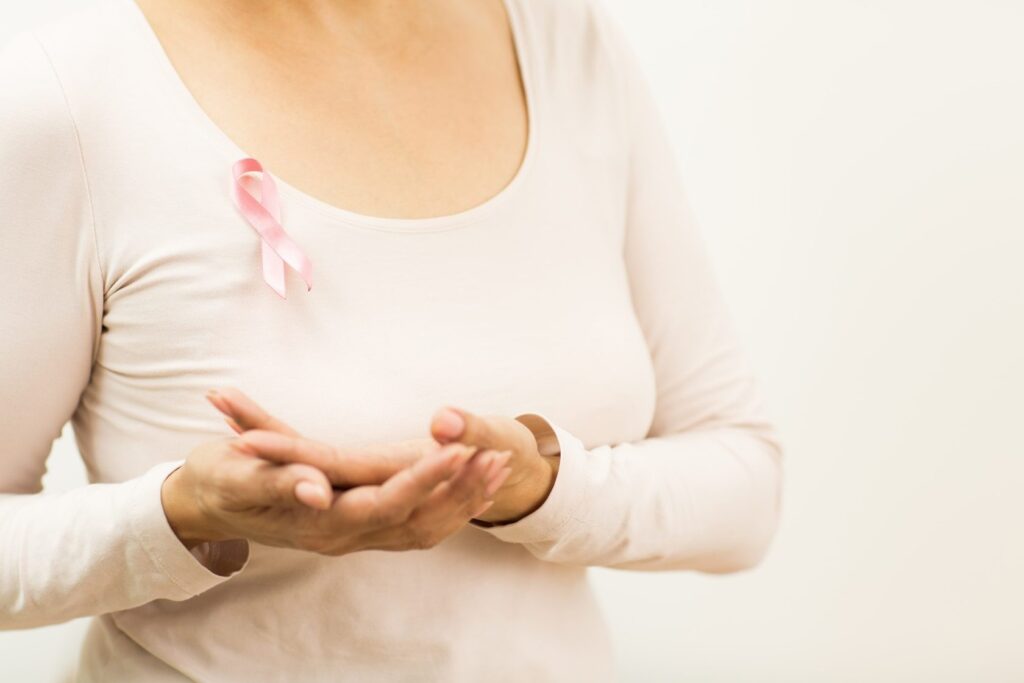
Risk Factors
Knowledge of main risk-factors, self-examination and well-timed application of echo-mammography and radiological mammography methods are of considerable importance in prevention of breast disease.
Nobody is protected from breast cancer; however, certain risk-factors exist that should be taken into consideration.
These risk factors are:
-
Yearly age of first menstrual period - menarche (up to the age of 12).
-
Late menopause (termination of period after age of 50).
-
Abortions.
-
First delivery at later age (risk for development of breast cancer is relatively high in nulliparous women).
-
Short-term period of lactatition (early termiation of breastfeeding).
-
Genetic predisposition, strong family history of breast cancer.
-
Breast cancer in 1st degree relatives (mother, sister, aunt).
-
History of radiation exposure.
-
Obesity.
- Women with 3 or more above-listed risk factors have higher risk/chance for development of breast cancer. Women that are in risk group have to perform breast examinations frequently.

What findings are imortant during examination?
• Solid lesions/masses noted in breast or axillary fossa.
• Redness or heat of breast.
• Skin having the appearance of lemon cortex .
• Retraction of breast skin.
• Breast pain.
• Redness and burning in the area of nipple.
• Retruction of nipple.
• Bloody or other type discharge from nipple.
These signs provide the basis for raising alarm, but at the beginning cancer shows no signs and can not be detected by simple clinical examination. Therefore, if you do not have any symptoms, it is recommended to have regular check up for prevention: self-examination once a month and clinical breast examination once a year.
Basic indications for breast ultrasound
• Women up to age of 35, pregnant women and women while breastfeeding and children of both genders. In these cases radiological mammography is not efficient. Breast ultrasound is harmless to be performed in aforementioned cases.
• Differential diagnostics of various structures (cysts, solid lesions/masses)noticed during breast examination/palpation or radiological mammography of breast.
• the so-called "X-ray dense" i.e. mammary gland represented mainly by glandular tissue (in women over 40 years old)
• Mammary gland examination in men.
• Mammary gland examination in men.
• Evaluation of supraclavicular, infraclavicular, axillary and regional dissemination of breast cancer.
• Observation/follow up after surgery and conservative treatment.
• Observation/follow up after plastic and reconstructive surgery.
• Aspiration of breast cysts under ultrasound control.
• Aspiration of breast cysts under ultrasound control.

Self-examination of breast is appropriate within the first week after completion of menstrual cycle. Women without menstruation have to examine breast on a monthly basis.
Procedure of self-examination:
You should stand in front of a mirror, at first with relaxed arms on your sides, and then while with your arms raised above the head. During exam you have to pay attention to the following:
• During exam you have to pay attention to the following:
• Retraction of the nipple;
• Change in shape or size of mammary gland;
• Discharge from mammary gland;
• Are there any changes on your skin such as moisture or crusts?
Examination by hand or palpation is carried out in dorsal position. During the examination breast must be slightly elevated with small pillow placed under the shoulder.
Breast is examined by an opposite hand (right breast by left hand and vice versa). Examination should be done gently (extreme pressure must be avoided). Mammary gland should be examined completely in small areas. During the examination of large areas, hardness may be felt, but in most cases it does not mean that pathological changes exist.
Self-examination is carried out in three positions:
 Self-examination is carried out in three positions:
Self-examination is carried out in three positions:
 While on your back, abduct an arm - "arms to the sides" position
While on your back, abduct an arm - "arms to the sides" position
 Being in dorsal position you should relax you hand along your body and examine breast by an opposite hand.
Being in dorsal position you should relax you hand along your body and examine breast by an opposite hand.
External half of mammary gland is examined by fingers of opposite hand. You start examination from nipple and move your fingers towards upper external quadrant. 

Then you examine all parts of internal side via the following order: you start examination from nipple and move your hand towards breast bone. You should look for lumps, what consistency they have, if they are painful.
Then you examine axillary and infraclavicular areas and nipple: apply pressure to nipple and areola gently by two fingers, watch if there is any discharge. 
and nipples: gently hold the nipple and areola area with two fingers. Check for discharge.
Discharge may be:
• From one or both mammary glands;
• Spontaneous or released by pressure;
• Discharge maybe of different color: bloody, greenish, yellow or white.
It should be taken into account that in addition to cancer various reasons exist that can cause formation of mass in mammary gland and cause discharge from nipple.
Thus, if unordinary thing is noticed you have to visit a specialist (gynecologist, breast specialist) on time. Only he/she is able to make an accurate diagnosis based on special examinations.
